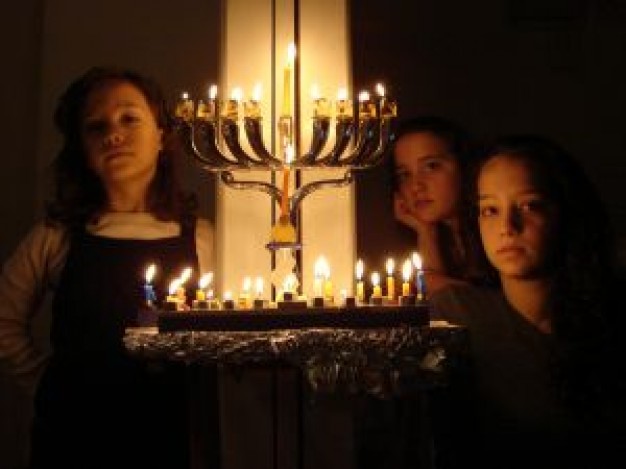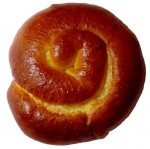This rabbinic quarterly update looks back to August, September and October which were rewarding and enjoyable, contrary to a teaching in the Babylonian Talmud Tractate Yoma 29a that “the end of the summer is worse than the beginning of summer.” According to Rashi, the Talmud is referring to the heat and its injurious effects, but I find the High Holidays with their accompanying preparation time and subsequent quietude most fulfilling.
High Holidays: Chavurat HaMidbar in Albuquerque graciously invited Beverly and me to participate in their annual retreat, this August held in Taos, and I used the opportunity to speak about repentance and its evolution from Biblical texts to contemporary writings.
![]() Rosh Hashanah itself found us in Cheyenne, Wyoming, where I served as shaliach tsibbur in the beautiful sanctuary of the Mt. Sinai synagogue. It was wonderful to reacquaint ourselves with people we’d met two years ago when we visited the shul before seeing former Los Alamos congregant Jay Wechsler, zikhrono livrakha, and we made several new friends as well.
Rosh Hashanah itself found us in Cheyenne, Wyoming, where I served as shaliach tsibbur in the beautiful sanctuary of the Mt. Sinai synagogue. It was wonderful to reacquaint ourselves with people we’d met two years ago when we visited the shul before seeing former Los Alamos congregant Jay Wechsler, zikhrono livrakha, and we made several new friends as well.
For Yom Kippur, it was back to New Mexico, where I led services in the building built by Temple Montefiore, the oldest congregation in the state. Though the community decreased in size from its peak in the early part of the twentieth century and eventually was forced to sell the building, the current Jews of Las Vegas have been working hard to reconstitute their presence. Beverly and I were honored to be the guests of the congregation from Friday through Sunday, and we appreciated the generosity of the Los Alamos Jewish Center which loaned a Torah scroll for the holiday. During the afternoon break on Yom Kippur I held an open question and answer session with topics ranging from Kabbalah to Jewish philosophers to raising a Jewish child.
On Erev Sukkot Beverly and I shared a lovely meal with dear friends under the bamboo s’chach of our sukkah and then went to sleep in sleeping bags later that evening. Some time after midnight I was awakened by gentle drops of rain on my face, and shortly after dragging our gear into the house, the heavens opened up. While we didn’t try to sleep out there again, Beverly and I had all our meals in the sukkah and enjoyed being back home for this most joyous of holidays. I led Shemini Atzeret services in Los Alamos, and then we headed to HaMakom in Santa Fe for Simchat Torah. The culmination of that service was the now-traditional unfurling of the entire scroll with congregants standing in a circle holding the text. Rabbi Malka and I were inside the circle offering prognostications inspired by the Torah text held by each individual. Time will tell how prescient I was.
Life Cycle Events: In other rabbinic duties over the quarter, I had the opportunity to assist with virtually every Jewish life-cycle event, from birth to death. My mother’s only sibling, my Uncle Charles, passed away in Florida before the High Holidays, and it was indeed sad to serve as rabbi for his funeral service, despite the pleasure of seeing my cousins, brother and mother. More joyous was the year-long conversion process for three adults which culminated in their “birth” as Jews, and I felt like a proud parent when I called these three, along with two other members of HaMakom, to the Torah as B’nai Mitzvah last month. Perhaps my favorite ceremony is a wedding, and recently I officiated at a lovely event north of Santa Fe on a glorious fall afternoon.
Books: As usual, my free time has been spent immersed in books from our ever-growing library. The library was a great asset in preparing me for a presentation at the annual New Mexico Jewish Historical Society meeting. This year’s theme was the Sephardic heritage, both in New Mexico and in Spain. My talk had the lengthy title of “Islam and Christianity Clash with Judaism in the Sephardic World: Maimonides’ Letter on Apostasy and Nachmanides’ Disputation at Barcelona.” In addition to delivering this lecture, I also got to lead Havdalah before the Saturday evening session.Two growing areas in our library are Israeli fiction and Yiddish fiction in English translation; in the former category I particularly enjoyed reading The Story of Aunt Shlomzion the Great by recently deceased Yoram Kaniuk while in the latter I was entranced by From Man to Man by Moshe Nadir. In the scholarly realm, I heartily recommend Burnt Books by Rodger Kamenetz whose visit to Santa Fe inspired my choice of reading material.
Assuming my progress in the 7 ½ year cycle of reading the entire Babylonian Talmud stays on track, I should shortly read the aforementioned passage from Tractate Yoma, and I may learn more about the difficulties associated with the end of summer. In the meantime, I wish you a joyous Chanukah and winter.
B’shalom, Rabbi Jack


